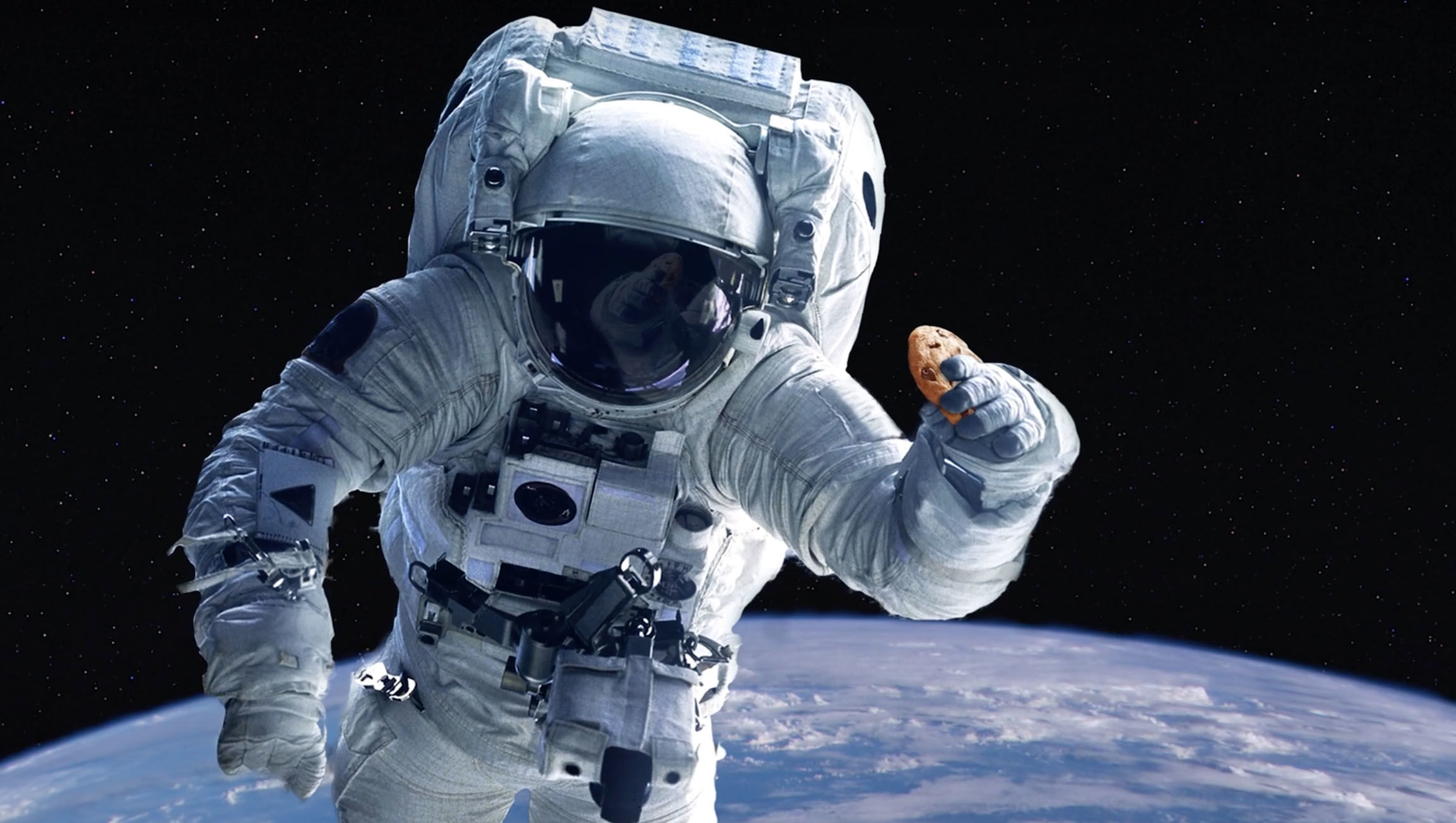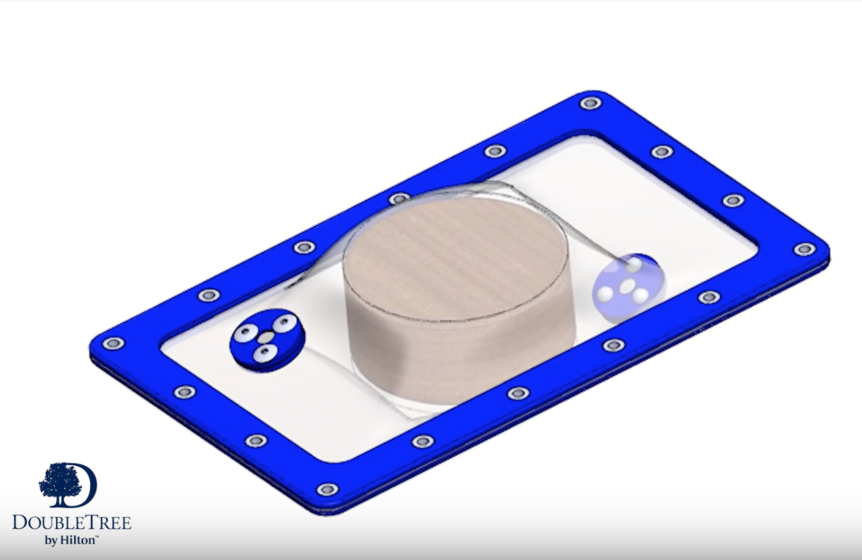Create a free profile to get unlimited access to exclusive videos, sweepstakes, and more!
Get a taste of the delicious science that goes into baking cookies in space

Space food has taken more than one giant leap since the Apollo 11 era, though up until now — even though astronauts have been able to heat up an entire Thanksgiving dinner on the ISS — nothing has actually ever been cooked in space.
That’s about to change since the latest NASA mission to take off to the ISS on Saturday — and SYFY WIRE was right there to see it zoom into the sky — was also carrying cookie dough and an oven made for baking in microgravity. Now that DoubleTree hotels’ famous chocolate chip cookie dough, along with an oven that was a collaboration between Nanoracks and Zero G Oven, are on board the ISS, those cookies are going to be the first thing ever baked in space. But how exactly does baking work beyond the reach of Earth’s gravity?
In case you're wondering how that Thanksgiving dinner didn't go cold, hot water has been one of the more popular methods of heating food in space until now.
Think about how adjustments have to be made for high-altitude baking. Recipe time, heat level, and other factors will also have to change in space. There is no way every variable can be exactly the same as it would be on Earth, because the conditions are too drastically different. Convection ovens push heat around with a fan since hot air cooks food much faster when it’s circulating, but that can only happen in gravity. You can’t possibly use an everyday convection oven where gravity is all but nonexistent.
“When you think about how things work here on the ground when you bake, convection is a huge part of what you do, where you have that current that’s induced by gravity,” Nanoracks senior internal payloads manager Mary Murphy explains to SYFY WIRE. “Hot air and cold air have different properties, so hot air actually rises from the current when you’re baking.”
You can’t possibly get air to circulate in zero-G the same way it does on terra firma. In microgravity, heat doesn’t dissipate the same way it does on the ground. It instead tends to pocket in whatever area it’s concentrated in unless it gets moved around somehow. That means convection either has to be induced or you need to switch to some alternate method of heating things up. Radiation is what Nanoracks decided to go with.
“What we’ve done with the oven design is created a cylindrical environment, so the radiation of the elements spreads evenly throughout that cylinder to focus the heat on the cookie,” Murphy says.
So how are these cookies predicted to turn out, besides making the space station smell absurdly delicious? Murphy says that has been hotly debated among the Nanoracks team. They could look exactly like chocolate chip cookies do on Earth. Maybe they will end up somewhat cylindrical instead. If things get really wild, they could even end up spherical, kind of like cookie-planets. What the team thinks is most likely to happen is that the cookies (each of which will bake in its own individual bag) will end up in a sort of oval shape.
“I think if we come out with a completely puffy sphere of a cookie, I guess that would be the most extreme thing I can think of,” Murphy says.
If the cookies are a success, what kind of food is Nanoracks thinking of cooking on the ISS next? They don't yet know what the next experiment is going to be. So long as it doesn’t involve something that will stay contained and not create any hazards, it could be anything from bread to a burger. Just no fries. Hot oil is way too dangerous to mess with in space.
“We’re really taking it one experiment at a time and we’re very fortunate that Zero G Kitchen and Nanoracks reached out to us to participate in it,” Garrett Marqua, Senior Director of Brand Management at DoubleTree, tells SYFY WIRE. “We’re kind of just taking this and treating it as isolated and see what we get out of that."
The astronauts were supposed to hold off on tasting the cookies initially, but keeping hungry human hands off a warm cookie isn’t going to happen ... even in space. We’ll let you know how they turn out.



























